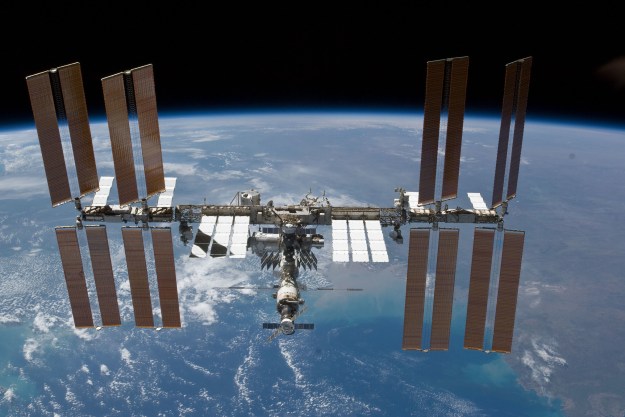“Our research team has been working to produce bioengineered lung tissue as model systems to examine human responses to injury, infectious disease, or toxin exposure for the last five years,” Joan Nichols, an associate director for research at the University of Texas Medical Branch who is helping lead the study, told Digital Trends. “The experiment we are sending to the ISS uses the microgravity environment of space to test strategies for growing new lung tissue, and will assist Earth-based efforts to develop complex bioengineered tissue that can be used to repair damaged organs or reduce organ rejection in the future.”
Nichols and her team prepared a bioreactor for the astronauts, complete with stem and progenitor cells, the type of cells that enable us to breathe. Now that the cells have reached the ISS, astronauts will place them onto a scaffold, a lung that has had all of its dead and damaged cells removed. From there they hope the cells will propagate.
“The scaffold is the skeleton of the lung and supports the cells as they grow and form tissue,” Nichols said. “We then add human lung progenitor cells to the scaffold piece as well as growth factors needed to support tissue development. Tissues are grown over several weeks’ time in a supportive bioreactor environment.”
By growing these cells on a lung in space, the researchers hope to further their understanding of how a healthy lung functions and how microgravity affects the body’s repair mechanisms.
“In the microgravity of space, stem cells retain their ability to reproduce without maturing to final stage cell types, Nichols explained, “so a few lung stem cells isolated from a person could be used to produce a lot of cells in microgravity. That would mean that we could eventually develop methods to produce a lung for anyone who needs one that matches their genetic and tissue profile without the need to give drugs to suppress the immune response to the transplant.”
The research may have implications for people on Earth, where patients with incurable lung diseases would benefit from a lung transplant but don’t have access to an organ. Stem cell growth in microgravity offers a promising approach to large-scale production of these organs.
Editors' Recommendations
- Crewed Soyuz launch to space station suffers rare late abort
- Air is leaking from Russian module of the International Space Station
- Watch this astronaut’s ‘space waltz’ on the ISS
- Russian cosmonaut breaks record for time spent in space
- SpaceX needs good weather for Wednesday’s crewed launch. Here’s the forecast


